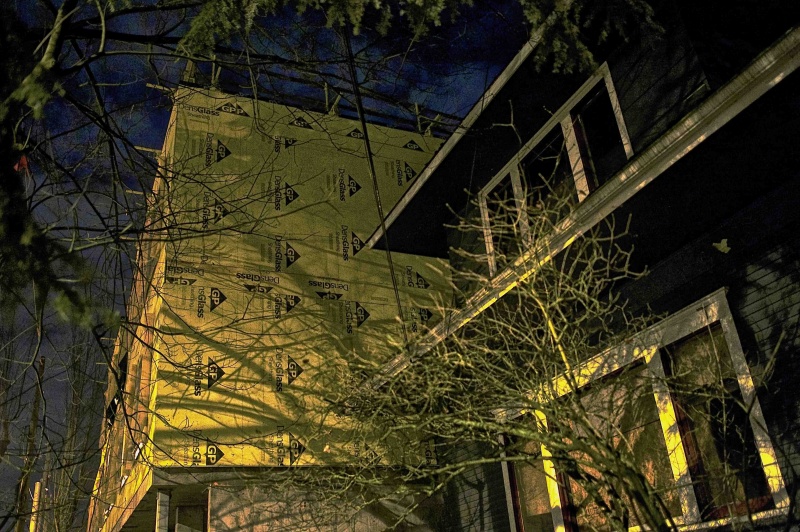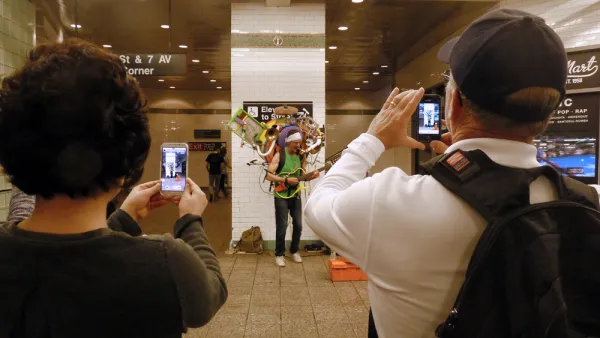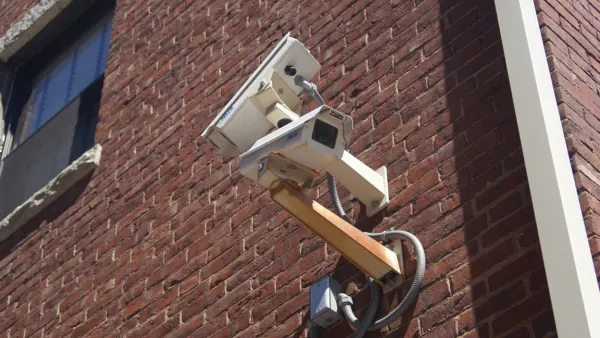In an ongoing series, Urbanism Without Effort author Chuck Wolfe argues the importance of the overlaps, overlays and convergence points that define city life, and emphasizes the importance of reading and interpreting their everyday expression.
 In the first five short articles in a ten-part series, Wolfe uses photographs of his native Seattle to illustrate points of context, focus and catalysts for today’s urban issues and debates, all summarized in the working term, "juxtapositions". They are often in plain sight, he notes, in familiar patterns of overlap and/or interdisciplinary layers:
In the first five short articles in a ten-part series, Wolfe uses photographs of his native Seattle to illustrate points of context, focus and catalysts for today’s urban issues and debates, all summarized in the working term, "juxtapositions". They are often in plain sight, he notes, in familiar patterns of overlap and/or interdisciplinary layers:
Look at a juxtaposition—and see confronting dilemmas, flashpoints and ripples in time—all of which are recognizable in the faces, spaces and places of everyday life.
Rather than a static view, he stresses, for example, the interactivity of adjacent new and old construction, contrasting forms of light and blended land, water and natural environments. He shows visible reflections of regulatory process in human behavior. He repeats the path-crossing aspects of street corners and sit-able places.
He summarizes the importance of such urban juxtapositions in the introductory article:
These overlays align us towards discussion of sudden and gradual change, generational differences, public and private preferences, merger of cultures and business types, and mixing of land uses, transportation modes, and housing approaches. They are more than transitions, but focal points for who decides the urban agenda and who gets versus who pays. Accordingly, they drive urban politics and professional services—and we should know how to recognize and work with them...
Wolfe's pragmatic tone combines with the importance of observing human behavior in the spirit of William H. Whyte, Jan Gehl and others. In the fifth article he illustrates how a corner street performer inherently knows the stages and windows and observation points of urban life—the entry points to everything from transportation modes to safety at night—and that knowledge is captured in accompanying photographs.
Why observe in the ways Wolfe suggests?
In such imagery we can predict policy debates, neighbor opposition, conflicts of parent and child in a way that can inspire dialogue, a search for consensus, or outright conflict and confusion.
For all articles in the series, click here.
FULL STORY: in the urban world, juxtapositions matter

Analysis: Cybertruck Fatality Rate Far Exceeds That of Ford Pinto
The Tesla Cybertruck was recalled seven times last year.

National Parks Layoffs Will Cause Communities to Lose Billions
Thousands of essential park workers were laid off this week, just before the busy spring break season.

Retro-silient?: America’s First “Eco-burb,” The Woodlands Turns 50
A master-planned community north of Houston offers lessons on green infrastructure and resilient design, but falls short of its founder’s lofty affordability and walkability goals.

Test News Post 1
This is a summary

Analysis: Cybertruck Fatality Rate Far Exceeds That of Ford Pinto
The Tesla Cybertruck was recalled seven times last year.

Test News Headline 46
Test for the image on the front page.
Urban Design for Planners 1: Software Tools
This six-course series explores essential urban design concepts using open source software and equips planners with the tools they need to participate fully in the urban design process.
Planning for Universal Design
Learn the tools for implementing Universal Design in planning regulations.
EMC Planning Group, Inc.
Planetizen
Planetizen
Mpact (formerly Rail~Volution)
Great Falls Development Authority, Inc.
HUDs Office of Policy Development and Research
NYU Wagner Graduate School of Public Service




























